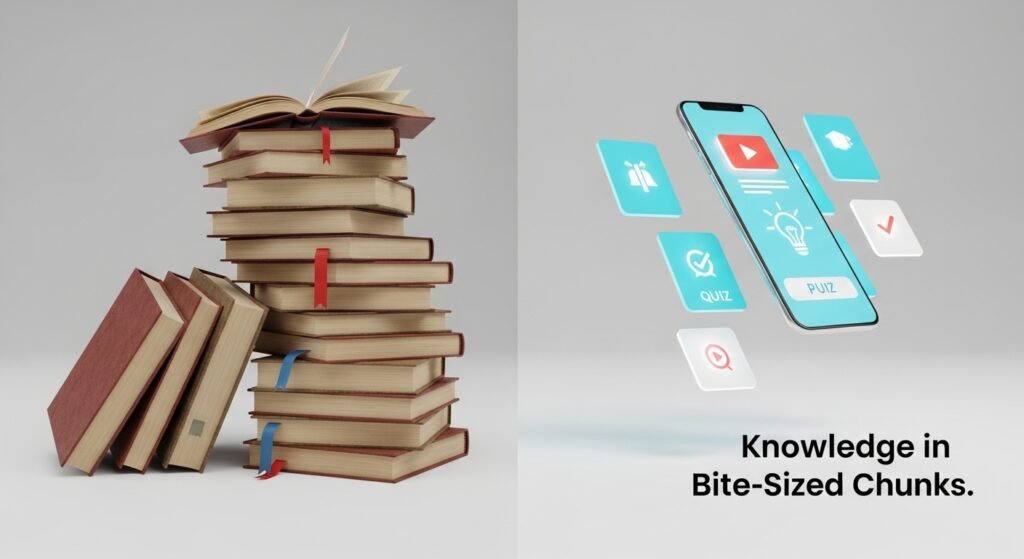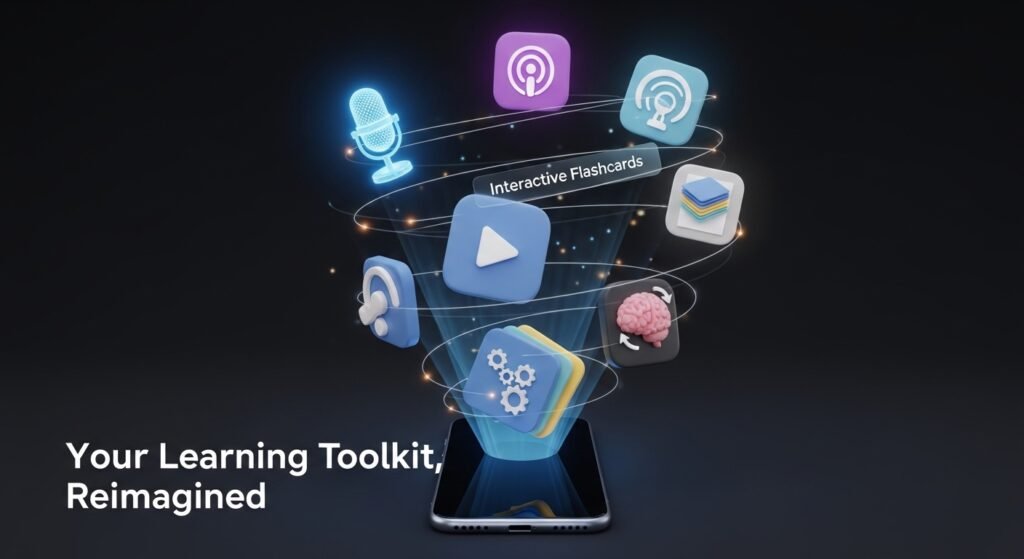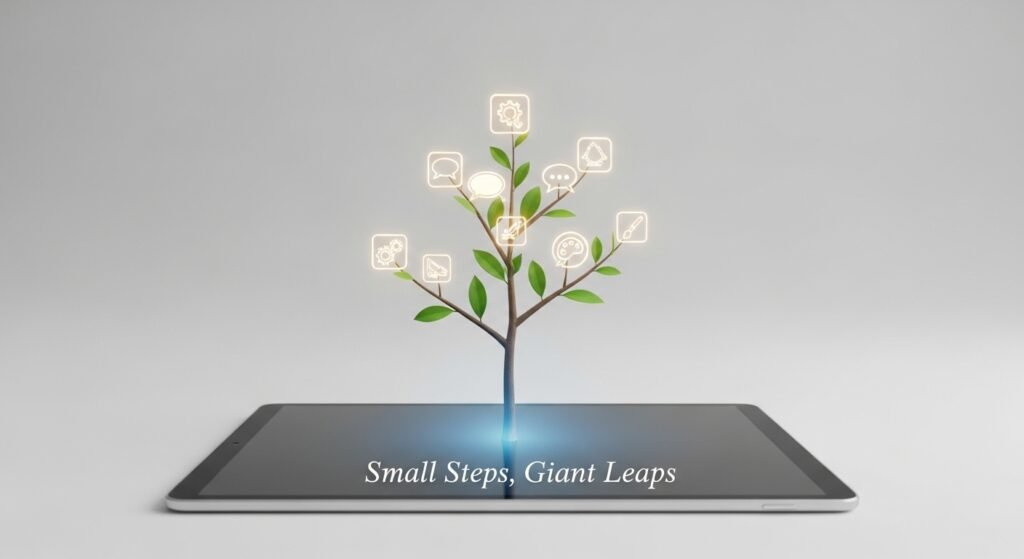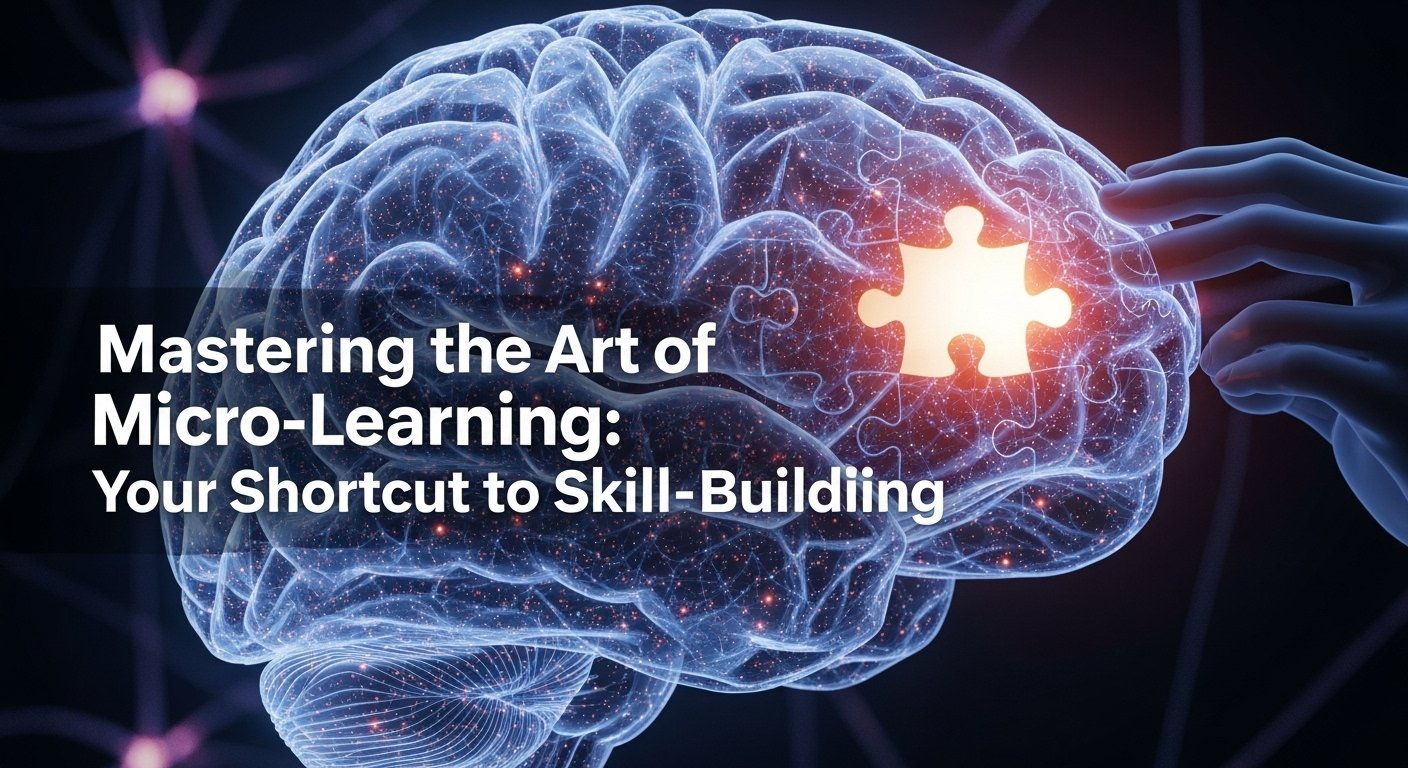Mastering the Art of Microlearning: Your Shortcut to Skill-Building in a Hectic World
Do you ever feel like you’re caught in a relentless sprint, constantly juggling work, studies, personal life, and that nagging desire to actually learn something new? In today’s hyper-connected, fast-paced world, finding dedicated blocks of time for traditional learning often feels like a luxurious myth. Yet, the demand for new skills—from coding to communication, digital marketing to data analysis—is more intense than ever. What if there was a powerful, practical solution that fit seamlessly into your already packed schedule? Enter microlearning: the ultimate strategy for quick skill-building that’s transforming how busy US students and professionals navigate the educational landscape of 2025 and beyond.
Imagine learning a valuable new concept or honing an essential skill in the time it takes to grab a coffee, commute to work, or wait for a meeting to start. This isn’t just wishful thinking; it’s the core promise of microlearning. It’s about breaking down complex topics into bite-sized, digestible chunks, designed for rapid consumption and enhanced retention. Forget the hours-long lectures and daunting textbooks. With microlearning, you’re empowering yourself to continuously grow, adapt, and stay ahead, one small, impactful lesson at a time. It’s a revolutionary approach, making skill acquisition more accessible and efficient than ever before.
Best Remote Internship Programs in 2025

Why Microlearning is the Future (and Present) of Skill Development
The traditional model of education, with its long courses and extended study periods, was built for a different era. Today, information explodes at an unprecedented rate, and the shelf-life of skills is shrinking. What was cutting-edge last year might be standard — or even obsolete — this year. This rapid evolution demands a learning approach that is equally agile and responsive. That’s precisely where microlearning shines, making it an indispensable tool for anyone serious about continuous personal and professional development.
Our attention spans, too, have evolved. The digital age has conditioned us to consume information in short bursts, from social media feeds to quick video tutorials. Trying to force ourselves through two-hour online courses after a draining workday often leads to fatigue, disengagement, and ultimately, a failure to retain information. Microlearning acknowledges this reality and leverages it. By aligning learning with our natural consumption habits, it makes education not just palatable, but genuinely enjoyable and effective.
The Science Behind Small Bites: Why Microlearning Works
It’s not just a trend; there’s solid psychological and cognitive science underpinning the effectiveness of micro-learning. Our brains are actually better at processing and retaining information when it’s delivered in smaller, focused doses. This phenomenon is often referred to as “chunking.”
- Enhanced Retention: Studies suggest that learning in shorter, focused sessions can lead to better long-term memory consolidation. Our brains need time to process and file away new information, and short breaks between microlearning modules provide just that.
- Reduced Cognitive Load: Large amounts of new information can overwhelm our working memory. Microlearning reduces this cognitive load by presenting one concept at a time, allowing for deeper understanding before moving on.
- Increased Engagement: Shorter content means less likelihood of boredom or distraction. When a lesson feels achievable in just a few minutes, we’re more motivated to start and complete it. This intrinsic motivation is key to successful learning.
- “Spaced Repetition” Friendly: Microlearning lends itself perfectly to spaced repetition, a powerful learning technique where information is revisited at increasing intervals. Short modules are easy to slot into a review schedule, reinforcing learning without feeling like a chore.
Consider the typical modern learner: juggling a full-time job, family responsibilities, and maybe even a side hustle. For this demographic, the idea of committing to a 40-hour online course can be daunting, if not impossible. Microlearning offers a lifeline, allowing them to make tangible progress on their skills without derailing their entire life.
Traditional vs. Microlearning: A Modern Comparison
To truly appreciate the power of micro-learning, let’s compare it to more traditional learning methods. Both have their place, but for rapid skill acquisition in a dynamic environment, micro-learning often comes out on top.
| Feature | Traditional Learning (e.g., long courses, seminars) | Micro-learning (e.g., short videos, infographics) |
| Duration | Hours to days/weeks per module/session | 1-15 minutes per module/session |
| Content Focus | Broad topics, deep dives, comprehensive curriculum | Single concept, specific skill, targeted information |
| Engagement | Can wane over long sessions, requires sustained focus | High, due to brevity and immediate relevance |
| Flexibility | Less flexible, requires scheduled time blocks | Highly flexible, “on-the-go” learning |
| Retention | Can be good with dedicated effort, but also fatigue | Often higher for specific concepts due to focus |
| Cost | Can be significant for full courses | Often more accessible, bite-sized pricing |
| Application | Theoretical depth, foundational knowledge | Practical application, immediate problem-solving |
Export to Sheets
This comparison highlights that microlearning isn’t about replacing deep, foundational education but rather complementing it, especially for upskilling and reskilling needs in a professional context. It’s about optimizing the learning process for speed and efficiency.
Best Remote Internship Programs in 2025
Unlock Your Potential: Practical Applications of Microlearning
So, how does this theoretical advantage translate into real-world skill-building? The beauty of micro-learning lies in its versatility and adaptability across various domains. Whether you’re a college student looking to master a tricky concept, a professional aiming for a promotion, or an entrepreneur needing to learn a new digital tool, micro-learning has a strategy for you.
For Busy Professionals: Staying Relevant and Ahead
In the corporate world, continuous learning is no longer a luxury; it’s a necessity. Jobs are evolving, and new technologies emerge constantly. Microlearning provides the perfect solution for busy professionals to quickly acquire new competencies without disrupting their demanding schedules.
- Sales Professionals: Learning new product features or objection-handling techniques through 5-minute video explainers before a client call.
- Marketing Specialists: Grasping the latest algorithm updates on social media platforms via short articles or interactive quizzes.
- IT Developers: Picking up a new syntax or framework through a series of interactive coding challenges or short instructional videos during lunch breaks.
- Managers: Acquiring quick tips on effective communication, feedback delivery, or team motivation from short animated modules.
Many companies are now integrating microlearning platforms into their corporate training, recognizing its power to boost employee engagement and skill retention. Companies like Axonify and Blinkist are excellent examples of this approach, offering employees knowledge in digestible formats.
For Students: Acing Exams and Grasping Complex Concepts
Students, particularly in the US, face immense pressure to absorb vast amounts of information. Microlearning can be a game-changer for academic success, transforming study habits and making learning less overwhelming.
- Pre-exam Refreshers: Quick quizzes or flashcards on key definitions, formulas, or historical dates right before an exam.
- Complex Topic Breakdowns: Watching a 3-minute animation explaining a challenging scientific concept (e.g., cell division, calculus theorem) instead of re-reading an entire chapter.
- Language Learning: Using apps like Duolingo for 10-minute daily sessions to learn new vocabulary and grammar rules. This is a classic example of effective microlearning.
- Skill-Specific Tutorials: Watching short YouTube tutorials on specific software functions needed for a project (e.g., “How to create a pivot table in Excel”).
By integrating micro-learning into their daily routines, students can reinforce classroom learning, fill knowledge gaps, and develop strong, independent study habits.
For Everyday Skill Enhancement: Personal Growth on the Go
Beyond formal education and professional development, microlearning empowers individuals to pursue personal interests and build everyday skills effortlessly.
- Cooking: Learning a new culinary technique from a 2-minute video recipe.
- DIY & Home Repair: Watching a short tutorial on fixing a leaky faucet or hanging a picture frame.
- Financial Literacy: Grasping basic investment concepts or budgeting tips through short explainer videos or infographics.
- Mindfulness & Wellness: Engaging in 5-minute guided meditation sessions or learning quick breathing exercises.
The beauty is that these tiny learning moments add up, leading to significant skill development over time. This makes micro-learning incredibly satisfying and motivating.
4 Characteristics of Warm Demander Teachers | Balancing Care & High Expectations

My Personal Journey: How Microlearning Transformed My Approach to Productivity
As someone who is constantly striving to learn and evolve, I used to fall into the trap of grand learning plans. I’d sign up for a massive online course, dedicate a weekend to it, and inevitably, by Tuesday, my motivation would wane, and the course would gather digital dust. The sheer commitment felt overwhelming.
That’s when I discovered the magic of microlearning. Instead of trying to master a new programming language in one go, I started dedicating 15 minutes each morning to learning one new command or concept. While waiting for my coffee to brew, I’d watch a short tutorial on a new Excel function. During my commute, I’d listen to a 7-minute podcast summarizing key leadership principles.
The results were astonishing. Within weeks, I noticed a significant improvement in my technical skills and my ability to articulate complex ideas. The small, consistent wins built momentum and confidence. It wasn’t about the grand gesture; it was about the daily, almost imperceptible progress. This personal experience solidified my belief that microlearning isn’t just a buzzword; it’s a powerful, sustainable way to boost skills for anyone with a busy schedule. It truly changed how I approached continuous improvement.
Key Strategies for Maximizing Your Microlearning Experience
To truly harness the power of microlearning, it’s not enough to just consume short content; you need a strategy.
- Identify Your Learning Gaps: What specific skill do you need to acquire or improve? Break it down into its smallest components.
- Schedule “MicroMoments”: Consciously identify pockets of time in your day (commute, lunch break, waiting in line) and pre-plan what you’ll learn during those times.
- Choose the Right Format: Is it a 2-minute video, an infographic, an interactive quiz, a flashcard app, or a short article? Different topics suit different formats.
- Focus on One Concept: Each microlearning module should ideally focus on teaching one clear concept or one specific skill. Avoid information overload.
- Active Recall & Practice: Don’t just consume; apply. Immediately try to recall what you learned or put the skill into practice, even if it’s just mentally. This reinforces learning.
- Spaced Repetition: Revisit previous microlearning topics at increasing intervals. Use apps or simple note cards to remind yourself.
- Leverage Technology: Utilize apps, podcasts, YouTube channels, and dedicated microlearning platforms. Tools like Duolingo for languages or Coursera‘s short courses are excellent examples.
- Be Consistent: Even 5 minutes a day, consistently applied, is far more effective than an hour once a week. Consistency builds habits and yields long-term results.
By adopting these strategies, you transform microlearning from a passive activity into an active, high-impact method for continuous skill development.
4 Characteristics of Warm Demander Teachers | Balancing Care & High Expectations

The Tools and Platforms Driving the Microlearning Revolution
The rise of micro-learning wouldn’t be possible without an ecosystem of innovative tools and platforms designed to deliver bite-sized content efficiently. These resources are invaluable for busy individuals.
- Learning Apps: Duolingo (languages), Elevate (brain training), Khan Academy (short topic-specific videos across subjects).
- Video Platforms: YouTube channels dedicated to specific skills (e.g., coding tutorials, graphic design tips, quick cooking lessons).
- Podcast Apps: Short, informative podcasts that break down complex topics into digestible audio segments.
- Flashcard Apps: Anki (highly customizable spaced repetition), Quizlet (user-generated flashcards).
- Dedicated Microlearning Platforms: Many corporate learning platforms are now built around microlearning principles, offering short modules, quizzes, and gamified experiences.
- Infographics & Visual Content: Websites and social media accounts that condense complex information into easily understandable visual formats.
The key is to find the platforms and formats that best suit your learning style and the specific skills you want to develop. The abundance of options means there’s a microlearning solution for almost anything you want to learn.

Conclusion: Embrace Microlearning and Transform Your Skillset
In a world that never stops moving, the ability to continuously learn and adapt is your most powerful asset. Microlearning isn’t just a trend; it’s a fundamental shift in how we approach skill acquisition, perfectly suited for the demands of modern life. It empowers busy US students and professionals to overcome time constraints, enhance retention, and stay relevant by integrating learning seamlessly into their daily routines.
By embracing the principles of microlearning—breaking down knowledge into digestible chunks, leveraging short bursts of attention, and focusing on active application—you unlock a powerful pathway to continuous personal and professional growth. Don’t let a lack of time be an excuse for a lack of progress. Start small, stay consistent, and watch your skills flourish.
What’s the one skill you’ve always wanted to learn but felt you didn’t have time for? How can microlearning help you achieve it? Share your thoughts and experiences in the comments below!




Pingback: AI Ethics for Students: A Practical 2025 Guide - PaidScripts -Tech Education Hub: Courses & Student Resources